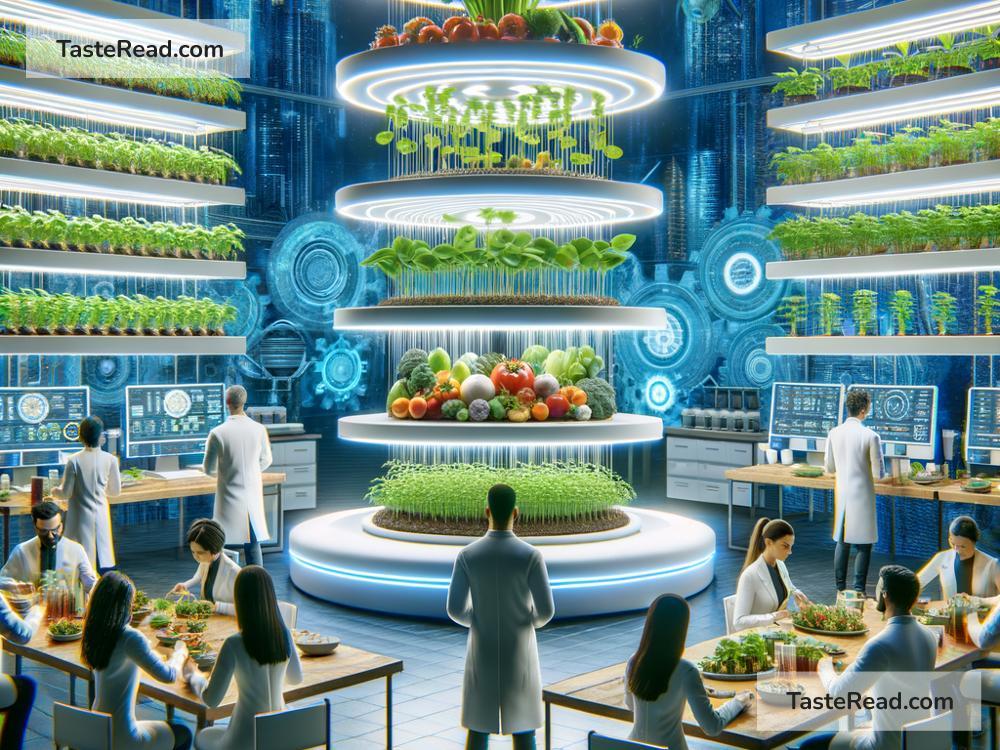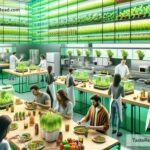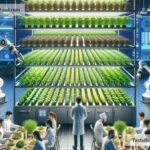The Future of Food and Collaborative Systemic Innovation: A Path Forward
Food is something we all need to survive, but the way we grow, produce, and consume it today faces big challenges. Climate change is affecting crops, resources like water and land are becoming scarce, and global hunger continues to be a problem for millions. At the same time, we’re facing health issues like obesity and malnutrition because unhealthy and processed foods are so widely available. Clearly, the food system of today is struggling to meet the needs of people and the planet.
But what if we could build a better future for food? The good news is that scientists, farmers, businesses, communities, and governments are starting to rethink the food system. They are working together in new ways to create innovative solutions. This collaborative approach, called “systemic innovation,” is key to solving the complex food challenges of tomorrow.
Let’s explore what the future of food could look like and how systemic innovation can make it happen.
What Is Systemic Innovation?
Systemic innovation means solving big problems by working together across different areas and industries. Instead of one group trying to fix everything on its own, systemic innovation allows many people, organizations, and ideas to come together. It focuses on collaboration, putting the pieces of the puzzle together to create long-term solutions.
For example, the food system affects many areas: agriculture, technology, healthcare, climate, businesses, and people’s daily habits. Improving food is not just about growing more crops or inventing new technologies—it also requires changing policies, educating communities, and rethinking our relationship with the planet. Systemic innovation brings all these parts together to create change that works for everyone.
What Challenges Does the Food System Face?
Before we look at solutions, it’s important to understand the problems. Today’s food system has many challenges:
-
Climate Change: Rising temperatures, floods, and droughts make farming harder. Crops fail, and livestock suffer, leading to food shortages in some areas.
-
Resource Scarcity: Farmland is shrinking, and fresh water is running out in many parts of the world. With a growing population, these limited resources add pressure to the food system.
-
Food Waste: One-third of all food produced globally is wasted. This happens at many levels—from farms to grocery stores to homes.
-
Hunger and Malnutrition: Millions of people still don’t have access to enough nutritious food. At the same time, processed and unhealthy food is causing health problems.
-
Environmental Damage: Large-scale farming, especially animal agriculture, contributes to deforestation, greenhouse gas emissions, and soil degradation.
-
Inequality: Many small farmers don’t earn enough, even though they play a key role in our food system. Larger corporations often dominate the market.
Clearly, these challenges are interconnected. To fix one problem, we often need to address several others at the same time.
How Can Systemic Innovation Help?
By bringing different groups together, systemic innovation can lead to fresh ideas and meaningful progress. Here are some emerging solutions that could shape the future of food:
-
Sustainable Farming: Farmers, scientists, and governments are working to create farming systems that protect the environment while producing enough food. Practices like regenerative agriculture rebuild healthy soils and reduce emissions.
-
Alternative Proteins: With growing concern over animal farming, companies are developing plant-based or lab-grown proteins. These innovations require less land and water and could reduce greenhouse gas emissions.
-
Smart Technology: Digital tools like sensors, drones, and AI are helping farmers use resources more efficiently. Precision farming allows crops to grow with less water and fewer chemical fertilizers, reducing waste and pollution.
-
Circular Economy: New business models focus on reducing waste. For example, leftover food can be turned into compost or bioenergy, while packaging materials can be reused.
-
Better Food Access: Communities, charities, and companies are finding ways to connect surplus food to people in need. Food banks and innovative delivery systems are helping reduce hunger while tackling waste.
-
Education and Awareness: Changing what people eat can help the planet. Campaigns promoting plant-based diets, local foods, and better nutrition are encouraging healthier and more sustainable choices.
Why Collaboration Is Key
No single organization or invention can solve the food crisis alone. That’s why collaboration is so important. Farmers need support from governments to adopt sustainable methods. Scientists need funding from businesses to develop new technologies. Communities need educational programs to understand how their choices impact the planet.
Collaborative systemic innovation allows these different groups to work as a team. Together, they can think beyond short-term fixes and aim for long-term solutions.
Imagine the Future of Food
What could the future look like if systemic innovation succeeds? Imagine a world where:
- Farms grow food that doesn’t harm the environment.
- People enjoy fresh, healthy meals at affordable prices.
- Resources like land, water, and energy are used efficiently.
- Hunger becomes a thing of the past.
It’s a challenging path, but it’s possible. Everyone has a role to play—whether it’s supporting local farmers, reducing food waste, or choosing sustainable products.
Conclusion
The future of food depends on systemic innovation and creative collaboration across the entire food system. With climate challenges, resource scarcity, and growing inequality, ambitious solutions are needed to ensure we can feed a growing population without harming our planet.
The good news is that change is already happening. From lab-grown meat to digital farming tools, we’re starting to see what the future of food could look like. But for this transformation to succeed, collaboration is essential. When governments, businesses, scientists, and communities work together, they can build a food system that’s healthy, sustainable, and fair for everyone.
By thinking big and working together, we can create a future where food nourishes both people and the planet. The journey starts now.


